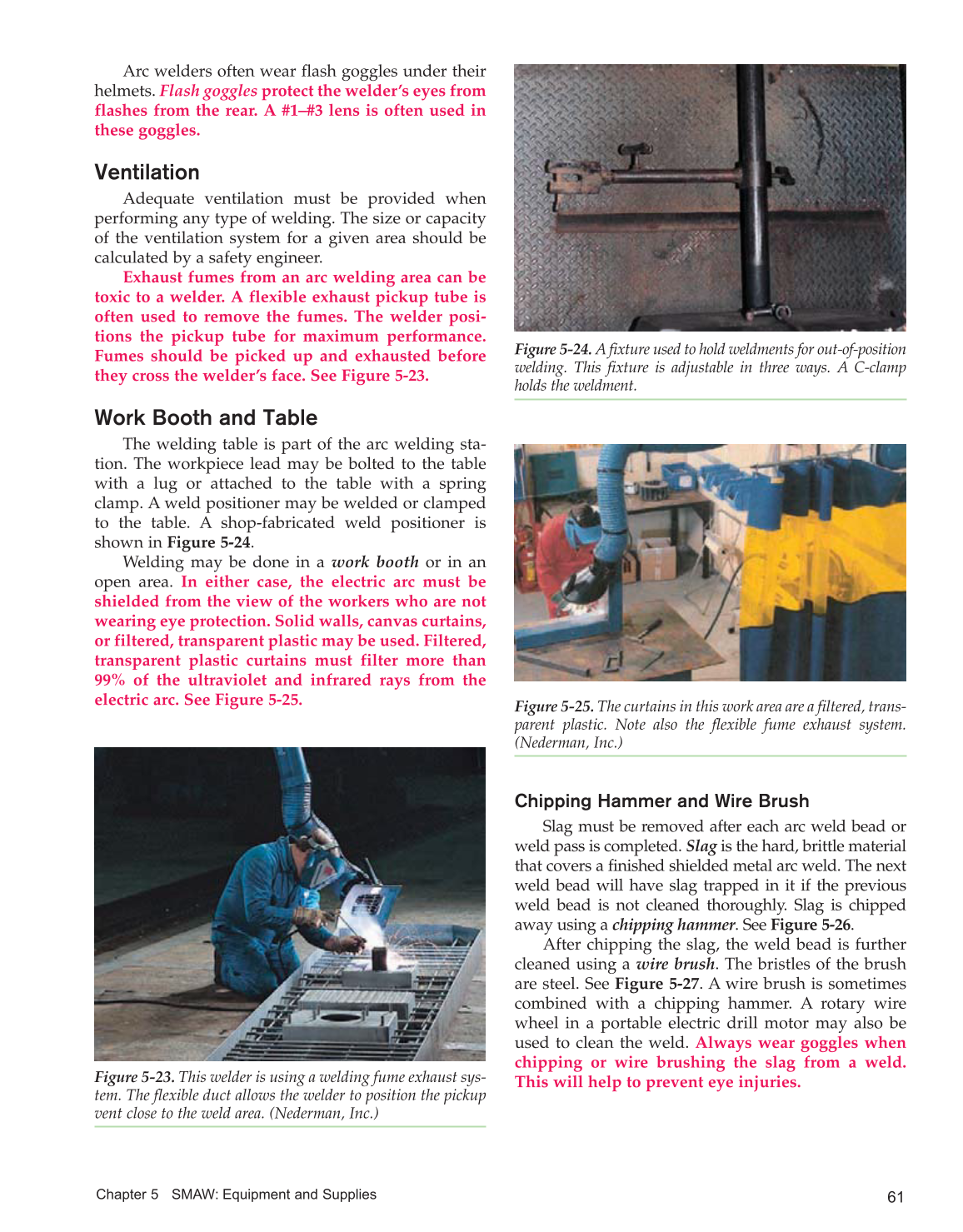61
Chapter 5 SMAW: Equipment and Supplies
Arc welders often wear flash goggles under their
helmets. Flash goggles protect the welder’s eyes from
flashes from the rear. A #1–#3 lens is often used in
these goggles.
Ventilation
Adequate ventilation must be provided when
performing any type of welding. The size or capacity
of the ventilation system for a given area should be
calculated by a safety engineer.
Exhaust fumes from an arc welding area can be
toxic to a welder. A flexible exhaust pickup tube is
often used to remove the fumes. The welder posi-
tions the pickup tube for maximum performance.
Fumes should be picked up and exhausted before
they cross the welder’s face. See Figure 5-23.
Work Booth and Table
The welding table is part of the arc welding sta-
tion. The workpiece lead may be bolted to the table
with a lug or attached to the table with a spring
clamp. A weld positioner may be welded or clamped
to the table. A shop-fabricated weld positioner is
shown in Figure 5-24.
Welding may be done in a work booth or in an
open area. In either case, the electric arc must be
shielded from the view of the workers who are not
wearing eye protection. Solid walls, canvas curtains,
or filtered, transparent plastic may be used. Filtered,
transparent plastic curtains must filter more than
99% of the ultraviolet and infrared rays from the
electric arc. See Figure 5-25.
Chipping Hammer and Wire Brush
Slag must be removed after each arc weld bead or
weld pass is completed. Slag is the hard, brittle material
that covers a finished shielded metal arc weld. The next
weld bead will have slag trapped in it if the previous
weld bead is not cleaned thoroughly. Slag is chipped
away using a chipping hammer. See Figure 5-26.
After chipping the slag, the weld bead is further
cleaned using a wire brush. The bristles of the brush
are steel. See Figure 5-27. A wire brush is sometimes
combined with a chipping hammer. A rotary wire
wheel in a portable electric drill motor may also be
used to clean the weld. Always wear goggles when
chipping or wire brushing the slag from a weld.
This will help to prevent eye injuries.
Figure 5-23. This welder is using a welding fume exhaust sys-
tem. The flexible duct allows the welder to position the pickup
vent close to the weld area. (Nederman, Inc.)
Figure 5-24. A fixture used to hold weldments for out-of-position
welding. This fixture is adjustable in three ways. A C-clamp
holds the weldment.
Figure 5-25. The curtains in this work area are a filtered, trans-
parent plastic. Note also the flexible fume exhaust system.
(Nederman, Inc.)
